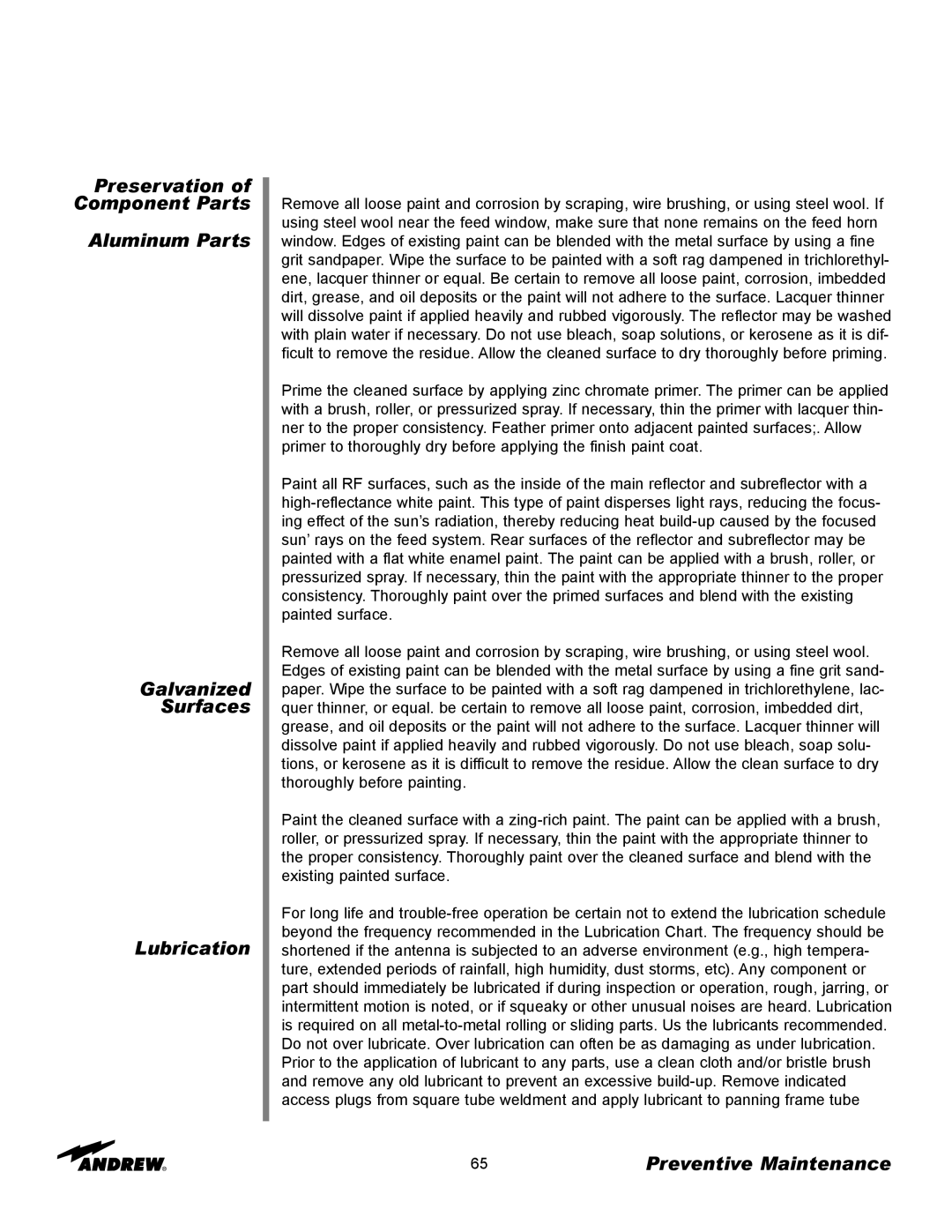
Preservation of
Component Parts
Aluminum Parts
Galvanized
Surfaces
Lubrication
Remove all loose paint and corrosion by scraping, wire brushing, or using steel wool. If using steel wool near the feed window, make sure that none remains on the feed horn window. Edges of existing paint can be blended with the metal surface by using a fine grit sandpaper. Wipe the surface to be painted with a soft rag dampened in trichlorethyl- ene, lacquer thinner or equal. Be certain to remove all loose paint, corrosion, imbedded dirt, grease, and oil deposits or the paint will not adhere to the surface. Lacquer thinner will dissolve paint if applied heavily and rubbed vigorously. The reflector may be washed with plain water if necessary. Do not use bleach, soap solutions, or kerosene as it is dif- ficult to remove the residue. Allow the cleaned surface to dry thoroughly before priming.
Prime the cleaned surface by applying zinc chromate primer. The primer can be applied with a brush, roller, or pressurized spray. If necessary, thin the primer with lacquer thin- ner to the proper consistency. Feather primer onto adjacent painted surfaces;. Allow primer to thoroughly dry before applying the finish paint coat.
Paint all RF surfaces, such as the inside of the main reflector and subreflector with a
Remove all loose paint and corrosion by scraping, wire brushing, or using steel wool. Edges of existing paint can be blended with the metal surface by using a fine grit sand- paper. Wipe the surface to be painted with a soft rag dampened in trichlorethylene, lac- quer thinner, or equal. be certain to remove all loose paint, corrosion, imbedded dirt, grease, and oil deposits or the paint will not adhere to the surface. Lacquer thinner will dissolve paint if applied heavily and rubbed vigorously. Do not use bleach, soap solu- tions, or kerosene as it is difficult to remove the residue. Allow the clean surface to dry thoroughly before painting.
Paint the cleaned surface with a
For long life and
65 | Preventive Maintenance |
